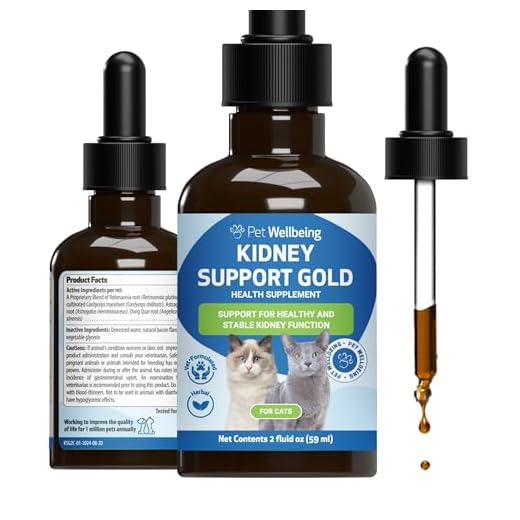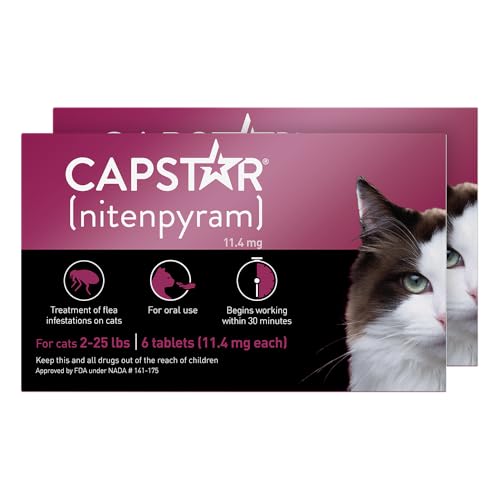

Monitor changes closely. If you notice a significant rise in fluid intake, it could signal various health concerns. Common issues include diabetes mellitus, kidney disease, or hyperthyroidism. Early detection is crucial for effective management.
Observe other behaviors. Increased thirst may accompany other symptoms such as weight loss, lethargy, or changes in appetite. Document these observations to aid veterinary diagnosis. Regular check-ups are essential to maintain overall well-being.
Encourage hydration through a fresh, appealing water source. Consider using a pet water fountain or providing multiple bowls around the house. This can make drinking more enjoyable and accessible.
Adjust diet if necessary. If your companion primarily consumes dry food, incorporating wet food can help increase moisture intake. This dietary shift can significantly improve hydration levels and overall health.
Identifying potential health issues related to increased water intake
Frequent visits to the bowl might indicate underlying health concerns. Conditions such as diabetes mellitus can lead to excessive thirst and urination. Monitoring for additional symptoms like weight loss or increased appetite is vital.
Kidney disease is another possibility. Watch for changes in energy levels, appetite, or litter box habits. Increased fluid consumption can be a compensatory mechanism due to decreased kidney function.
Hyperthyroidism, common in older felines, may also cause heightened thirst. Look for signs such as increased activity, weight loss, or a ravenous appetite. These symptoms warrant a veterinary consultation.
Urinary tract infections can provoke similar behaviors. If there are signs of straining or discomfort while using the litter box, immediate veterinary attention is necessary. Early intervention can prevent complications.
Maintaining a detailed log of drinking habits and any accompanying symptoms can assist a veterinarian in diagnosing potential issues. Timely action can lead to better management of any condition that may arise.
Evaluating dietary changes that may influence your pet’s thirst
Switching to dry kibble can lead to increased thirst. Unlike wet food, which contains higher moisture content, kibble requires more fluid intake to maintain hydration. Monitor the type of food being offered and consider transitioning to a balanced wet diet if excessive fluid consumption is noted.
Ingredients and additives
Some brands incorporate high sodium levels or artificial preservatives, which can trigger a thirst response. Review ingredient labels carefully. Opt for brands that prioritize natural ingredients and lower sodium content to support hydration without overconsumption of fluids.
Changes in feeding schedule
Altering feeding times or frequency might also influence thirst levels. Regular meal times can help stabilize hydration patterns. If meals are sporadic, consider a consistent schedule to better regulate your feline’s fluid intake.
Understanding Environmental Factors That Can Lead to Dehydration in Cats
Adjusting the environment can significantly impact hydration levels. Ensure access to fresh, clean liquids at all times. Stale or contaminated liquids can deter consumption, leading to increased thirst.
Temperature and Humidity
Higher temperatures and low humidity can accelerate fluid loss. In warm climates, consider providing shaded areas or cool spots. During hotter months, it’s crucial to monitor the surroundings and keep the living space comfortable.
Air Quality
Poor air quality, including smoke or strong odors, can cause respiratory irritation, increasing the need for hydration. Regularly ventilate the space to maintain a healthy atmosphere. Using air purifiers can also help improve the air quality.
Furthermore, changes in routine, such as moving to a new home or introducing new pets, can create stress. Stress often leads to changes in drinking habits. If you notice alterations in behavior or health, consult a veterinarian. For additional health concerns, check out this link on how to treat swollen lymph nodes in cats.
Monitor changes closely. If you notice a significant rise in fluid intake, it could signal various health concerns. Common issues include diabetes mellitus, kidney disease, or hyperthyroidism. Early detection is crucial for effective management.
Observe other behaviors. Increased thirst may accompany other symptoms such as weight loss, lethargy, or changes in appetite. Document these observations to aid veterinary diagnosis. Regular check-ups are essential to maintain overall well-being.
Encourage hydration through a fresh, appealing water source. Consider using a pet water fountain or providing multiple bowls around the house. This can make drinking more enjoyable and accessible.
Adjust diet if necessary. If your companion primarily consumes dry food, incorporating wet food can help increase moisture intake. This dietary shift can significantly improve hydration levels and overall health.
Identifying potential health issues related to increased water intake
Frequent visits to the bowl might indicate underlying health concerns. Conditions such as diabetes mellitus can lead to excessive thirst and urination. Monitoring for additional symptoms like weight loss or increased appetite is vital.
Kidney disease is another possibility. Watch for changes in energy levels, appetite, or litter box habits. Increased fluid consumption can be a compensatory mechanism due to decreased kidney function.
Hyperthyroidism, common in older felines, may also cause heightened thirst. Look for signs such as increased activity, weight loss, or a ravenous appetite. These symptoms warrant a veterinary consultation.
Urinary tract infections can provoke similar behaviors. If there are signs of straining or discomfort while using the litter box, immediate veterinary attention is necessary. Early intervention can prevent complications.
Maintaining a detailed log of drinking habits and any accompanying symptoms can assist a veterinarian in diagnosing potential issues. Timely action can lead to better management of any condition that may arise.
Evaluating dietary changes that may influence your pet’s thirst
Switching to dry kibble can lead to increased thirst. Unlike wet food, which contains higher moisture content, kibble requires more fluid intake to maintain hydration. Monitor the type of food being offered and consider transitioning to a balanced wet diet if excessive fluid consumption is noted.
Ingredients and additives
Some brands incorporate high sodium levels or artificial preservatives, which can trigger a thirst response. Review ingredient labels carefully. Opt for brands that prioritize natural ingredients and lower sodium content to support hydration without overconsumption of fluids.
Changes in feeding schedule
Altering feeding times or frequency might also influence thirst levels. Regular meal times can help stabilize hydration patterns. If meals are sporadic, consider a consistent schedule to better regulate your feline’s fluid intake.
Understanding Environmental Factors That Can Lead to Dehydration in Cats
Adjusting the environment can significantly impact hydration levels. Ensure access to fresh, clean liquids at all times. Stale or contaminated liquids can deter consumption, leading to increased thirst.
Temperature and Humidity
Higher temperatures and low humidity can accelerate fluid loss. In warm climates, consider providing shaded areas or cool spots. During hotter months, it’s crucial to monitor the surroundings and keep the living space comfortable.
Air Quality
Poor air quality, including smoke or strong odors, can cause respiratory irritation, increasing the need for hydration. Regularly ventilate the space to maintain a healthy atmosphere. Using air purifiers can also help improve the air quality.
Furthermore, changes in routine, such as moving to a new home or introducing new pets, can create stress. Stress often leads to changes in drinking habits. If you notice alterations in behavior or health, consult a veterinarian. For additional health concerns, check out this link on how to treat swollen lymph nodes in cats.
Monitor changes closely. If you notice a significant rise in fluid intake, it could signal various health concerns. Common issues include diabetes mellitus, kidney disease, or hyperthyroidism. Early detection is crucial for effective management.
Observe other behaviors. Increased thirst may accompany other symptoms such as weight loss, lethargy, or changes in appetite. Document these observations to aid veterinary diagnosis. Regular check-ups are essential to maintain overall well-being.
Encourage hydration through a fresh, appealing water source. Consider using a pet water fountain or providing multiple bowls around the house. This can make drinking more enjoyable and accessible.
Adjust diet if necessary. If your companion primarily consumes dry food, incorporating wet food can help increase moisture intake. This dietary shift can significantly improve hydration levels and overall health.
Identifying potential health issues related to increased water intake
Frequent visits to the bowl might indicate underlying health concerns. Conditions such as diabetes mellitus can lead to excessive thirst and urination. Monitoring for additional symptoms like weight loss or increased appetite is vital.
Kidney disease is another possibility. Watch for changes in energy levels, appetite, or litter box habits. Increased fluid consumption can be a compensatory mechanism due to decreased kidney function.
Hyperthyroidism, common in older felines, may also cause heightened thirst. Look for signs such as increased activity, weight loss, or a ravenous appetite. These symptoms warrant a veterinary consultation.
Urinary tract infections can provoke similar behaviors. If there are signs of straining or discomfort while using the litter box, immediate veterinary attention is necessary. Early intervention can prevent complications.
Maintaining a detailed log of drinking habits and any accompanying symptoms can assist a veterinarian in diagnosing potential issues. Timely action can lead to better management of any condition that may arise.
Evaluating dietary changes that may influence your pet’s thirst
Switching to dry kibble can lead to increased thirst. Unlike wet food, which contains higher moisture content, kibble requires more fluid intake to maintain hydration. Monitor the type of food being offered and consider transitioning to a balanced wet diet if excessive fluid consumption is noted.
Ingredients and additives
Some brands incorporate high sodium levels or artificial preservatives, which can trigger a thirst response. Review ingredient labels carefully. Opt for brands that prioritize natural ingredients and lower sodium content to support hydration without overconsumption of fluids.
Changes in feeding schedule
Altering feeding times or frequency might also influence thirst levels. Regular meal times can help stabilize hydration patterns. If meals are sporadic, consider a consistent schedule to better regulate your feline’s fluid intake.
Understanding Environmental Factors That Can Lead to Dehydration in Cats
Adjusting the environment can significantly impact hydration levels. Ensure access to fresh, clean liquids at all times. Stale or contaminated liquids can deter consumption, leading to increased thirst.
Temperature and Humidity
Higher temperatures and low humidity can accelerate fluid loss. In warm climates, consider providing shaded areas or cool spots. During hotter months, it’s crucial to monitor the surroundings and keep the living space comfortable.
Air Quality
Poor air quality, including smoke or strong odors, can cause respiratory irritation, increasing the need for hydration. Regularly ventilate the space to maintain a healthy atmosphere. Using air purifiers can also help improve the air quality.
Furthermore, changes in routine, such as moving to a new home or introducing new pets, can create stress. Stress often leads to changes in drinking habits. If you notice alterations in behavior or health, consult a veterinarian. For additional health concerns, check out this link on how to treat swollen lymph nodes in cats.









